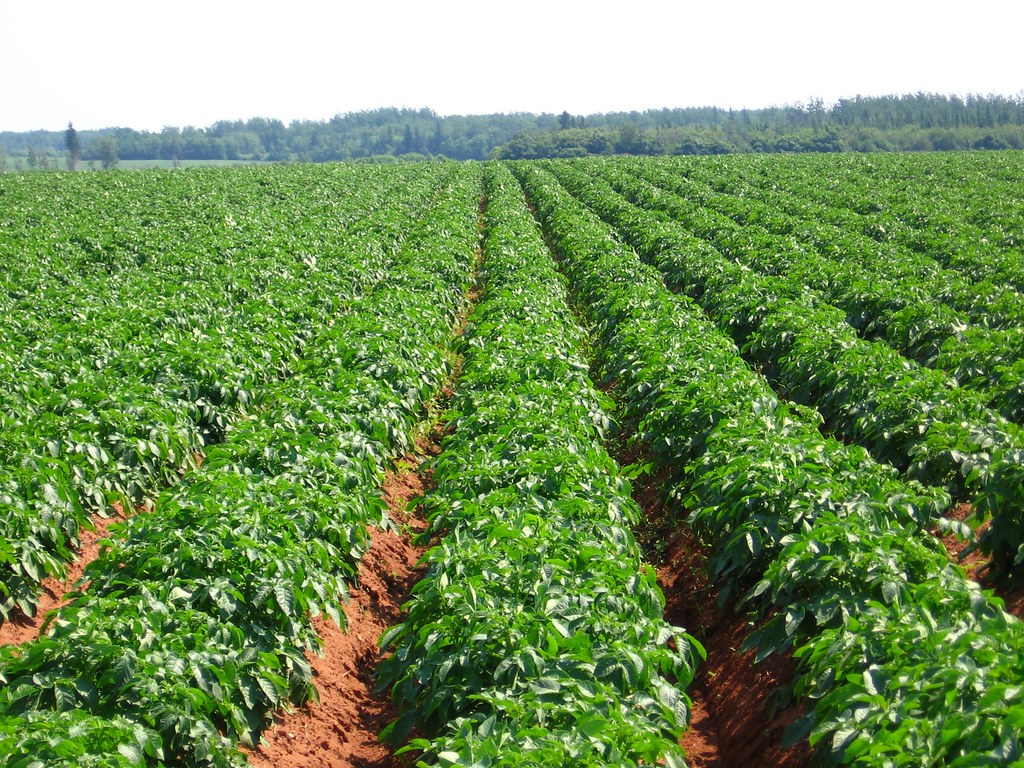Canada’s potato crop should be larger this year following the pandemic drop
With demand on the rebound as the global COVID-19 pandemic nears an end, Canada’s potato crop is expected to increase this year. Weather could be a deciding factor though on how big the final crop is.

“I’m thinking we’re in a better place than we were. We were really concerned at the start of planting in Western Canada,” Kevin MacIsaac, general manager of the United Potato Growers of Canada (UPGC), said in a phone interview in mid-June. “Based on what I see from rainfall amounts that came in the last two weeks, we’re in a better spot, and we have some water in those reservoirs. But again, the growing season is a long one, we’ve got a long ways to go to get that crop.”
The weather story varies across the country, with dry conditions in the west and better conditions in the Maritimes. While rain has fallen across the Prairies since planting, irrigation reservoirs are still running low which could cause further problems. In the Maritimes following dry conditions in 2020, a favourable winter allowed soil moisture reserves to be replenished starting the 2021 crop off well. Final acreage numbers won’t be released until mid-July by Statistics Canada, but the expectation is there will be a larger crop this year than last. UPGC is predicting acres will rise by at least 2.3 per cent, while the North American Potato Market News is calling for a 4.3 per cent increase.
The weather factor
Across Canada, potato growers are facing a wide range of issues from drought to heat. On the Prairies irrigation systems were turned on earlier than normal as spuds were planted into dry soil. Timely rains in May have made a difference though. “We’re a little bit behind on the emergence maybe a few days. But with the heat that we’ve been having since they emerged, I think (potato crops are) making pretty good progress,” Dan Sawatzky, general manager of the Keystone Potato Producers Association, explains in a phone interview.
Throughout the winter, Manitoba fields saw only 40 to 60 per cent of normal moisture amounts. Soil moisture reserves are running low with Sawatzky saying timely rains will be needed over the growing season. Many irrigation reservoirs are in Manitoba are fed by the Assiniboine Delta Aquifer — this has allowed for dams to be opened and reservoirs filled. Others are fed by off-stream reservoirs, specifically in the Carman, Winkler area, which haven’t been able to be filled.
“Some growers were able to lay pipe at quite a distance to try and fill their reservoirs from some of these streams that do flow out of the aquifer. So, there is some ability to capture a little bit of that water under permission,” Sawatzky says. In northern Alberta, the last two wet years have made for good soil moisture reserves. The southern part of the province is facing similar dry conditions to Manitoba though. In British Columbia crops are looking good with Warba potatoes already being harvested and sold.
In Ontario and Quebec planting got off to an early start. While planting conditions were optimal, several areas were hit by an early frost in May. Most have recovered since then but some are in desperate need of rain. In the Maritimes, potato planting went well with crops having just emerged as of the third week of June.
“Crops in the ground in good timing. And it’s good conditions, good soil temps, good moisture, we’re off to a good start. But we’re only on the first leg of the race,” Greg Donald, general manager of the Prince Edward Island Potato Board, says. Last year the growing season was challenging with dry conditions. Potato production on the Island dropped because of the drought, with New Brunswick growers suffering a similar fate.
“Because of the winter we had, with no frost when we had spring melt and then the spring rains because there’s no frost, a lot of that moisture went down into the ground as opposed to running off,” Donald explains. Reports from the P.E.I. Department of Environment, Energy and Climate Action show ground water levels were replenished following the drought. Donald says they’re at even better levels than at the start of the 2020 growing season.
Potato sector acreage breakdown
Following demand drops in 2020 due to the COVID-19 pandemic, contract volumes have increased with most Canadian growers receiving slight price increases, MacIsaac says. With the return of live events and restaurants across the continent reopening french fries are in demand. On top of that recent processing expansions at plants across the country, have spuds in hot demand. MacIsaac expects Canada needs around 8,500 more acres of spuds to fulfill processing demand.

Chip demand did increase during the pandemic as people stayed home and turned to comfort food. Contract volumes for chipping potatoes in Canada are similar to last year, MacIsaac says. For fresh potatoes there has been a shift from red to yellow potatoes planted. This is in line with a larger overall demand shift happening across North America, presenters at the Crop Transition Conference, held in-person and virtually in Fargo, N.D. on June 14 said. Overall fresh potato acreage isn’t expected to change much from last year though, MacIsaac expects.

